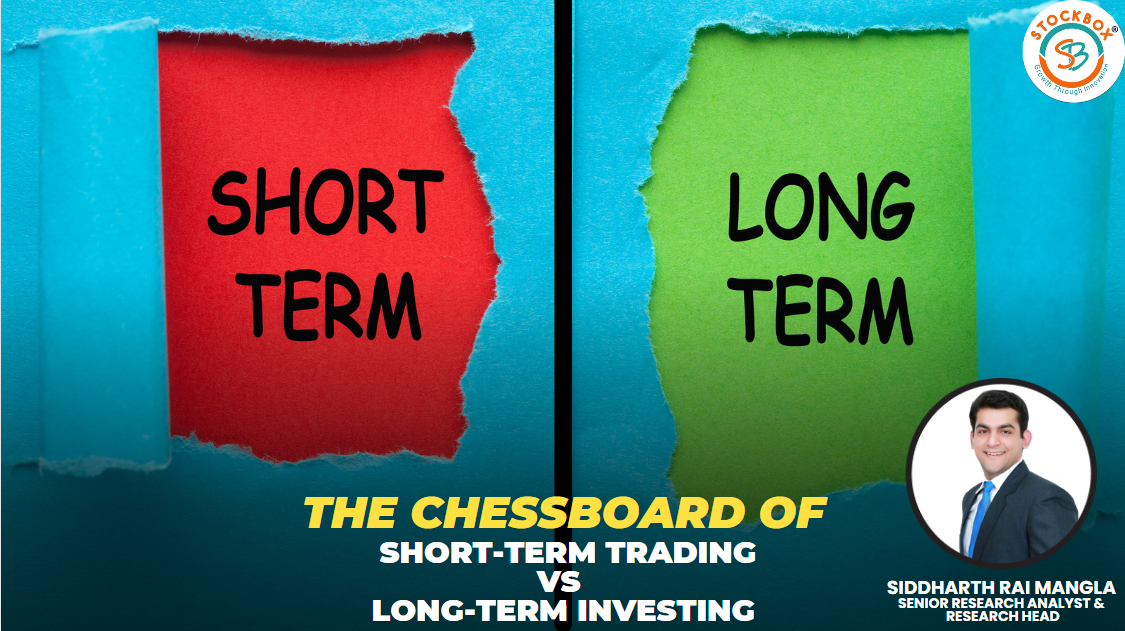In the ever-changing realm of financial markets, investors encounter a recurring question: do they pursue long-term strategies or engage in short-term trading? The decision between long-term investing and short-term trading is akin to choosing between a marathon and a sprint, each with its own set of strategies, risks, and rewards.
The Long and Winding Road of Long-Term Investing
Long-term investing is often compared to planting a seed and patiently watching it grow into a mighty tree. It involves buying and holding investments for an extended period, typically measured in years or decades. This strategy is founded on the principle of allowing the inherent value of an asset to appreciate over time.
One of the key advantages of long-term investing is the potential for compound returns. Reinvesting dividends and interest over an extended period can lead to substantial wealth accumulation. Moreover, Investors with long-term perspectives can better endure market volatility, as short-term fluctuations typically stabilize over the duration.
The psychological aspect of long-term investing is also noteworthy. It requires a disciplined mindset, a tolerance for market fluctuations, and the ability to resist the allure of quick profits. Patience becomes a virtue, and emotional decision-making takes a back seat to a well-thought-out, strategic approach.
The Thrill of the Trade: Short-Term Trading Strategies
Contrasting with the patient approach of long-term investing, short-term trading involves capitalizing on immediate market fluctuations. Traders execute rapid buy-and-sell transactions, often within the same day, aiming to profit from short-term price movements. The belief fuels this strategy that quick, well-timed trades can lead to significant gains.
The allure of short-term trading lies in its dynamism. Traders can adapt swiftly to changing market conditions, adjusting their positions based on real-time information. Technical analysis, charts, and market indicators become their tools of the trade as they navigate the intricate dance of market sentiment.
However, the fast-paced nature of short-term trading comes with its own set of challenges. Market timing becomes critical, heightening the risk of making impulsive decisions. Moreover, transaction costs, such as fees and commissions, can eat into profits, making consistent success in short-term trading a demanding feat.
Choosing Your Move: Striking a Balance
The decision between long-term investing and short-term trading is not a binary one; it’s about finding the right balance that aligns with one’s financial goals, risk tolerance, and time horizon. Some investors adopt a hybrid approach, blending elements of both strategies to create a diversified portfolio that combines stability with the potential for short-term gains.
Understanding personal financial objectives is crucial in making this decision. Long-term investing may be more suitable for those seeking wealth accumulation for retirement or other long-term goals, while short-term trading may appeal to individuals comfortable with a more active and hands-on approach to managing their investments.
In the end, the choice between investing and trading is a deeply personal. It can be influenced by individual preferences, risk appetite, and financial objectives. Success in the world of finance, like any strategic game, necessitates thoughtful consideration of the rules. It also requires a clear understanding of the playing field and the wisdom to make strategic moves. Whether you prefer the steady pace of a marathon or the swift movements of a sprint, remaining informed and disciplined is essential. Above all, it’s crucial to stay true to your financial goals.

